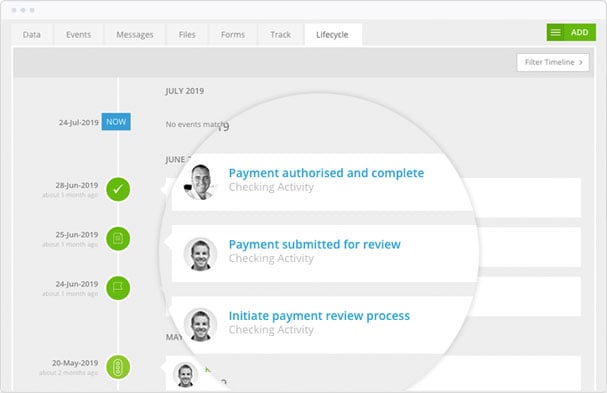

If you’re reading this article, you might have recently taken on the task to find a contract management solution for your company or you might be looking for how to justify securing internal resources to centralise all of your contract data.
It might also currently be your job to look after your business’s contracts and, without the budget for a solution, you’re finding it challenging.
This article will lay out the key elements you’ll want to focus on to make a compelling business case for investing in contract management, giving you the tools to sell the idea effectively to your stakeholders.
To those of us whose responsibility it is to manage contracts on a company’s behalf, either informally or formally, the justification for investment can seem like a no-brainer.
Maybe you’ve seen first-hand the monetary value of some of your key company agreements or the impact of a missed renewal. Perhaps you’ve seen key suppliers go out of business, leaving a significant hole in your supply chain.
However, it can be sometimes difficult to articulate the reasons to stakeholders in a way that gets them to recognise the benefits and this can impede your contract management plans.
This is often because, until you, nobody was looking at the combined impact of contracts across the business. Often contracts are signed by people in different departments, with different processes and their focus is only on the limited set of agreements for which they’re responsible.
There’s often no centralised register so nobody has a clear view of the total value, dates of renewal or compliance status of your business’s contracts.
Even if there is a central repository in these circumstances, such as spreadsheets or Sharepoint, a quick check will probably locate additional agreements or addendums being “stored” in people’s emails or desk drawers.
This brings us to the first key part of your business case…
You can be confident that if your business doesn’t have a formal contract management process in place that there will be plenty of surprises when you pull together all the available information about existing contracts.
Your summary should typically include:
The idea behind this section is simply to make clear the scope of the contract universe in your business and, like we said, open a few eyes to the scale of the opportunity (and the potential risk), especially for your key contracts.
You may have to accept that in the first instance, this won’t be an entirely exhaustive list but that, in itself, can also be a further asset to your CLM business case.
You can make a point of the fact that it’s not a total view of contracts, precisely because it’s currently not possible to get one.
Any credible business needs a ‘single source of truth’ when it comes to its contracts. This necessitates having a central location where they can be stored and where all departments can gain the access they need.
Here you can outline what it is you’re asking for in terms of investment from your stakeholders.
It could be funds for a new contract management software, the internal resources needed to take on centralising the contract data or, most likely, a combination of both.
Try to err very much on the side of caution with your estimates so that you leave the opportunity to “over-deliver” on your commitments down the line.
You should split your financial analysis into two main areas:
Cost savings
Proactive contract lifecycle management should naturally lead to the opportunity for cost savings. As visibility and awareness of company contracts increases, so too does the opportunity for identifying duplication/overlap of suppliers.
Knowing when renewal dates are will also provide the opportunity to negotiate with existing suppliers and investigate alternative, cheaper options.
In particular, best-practice contract management requires negotiation to take place prior to the contract notice period. If this date has passed, the supplier knows that you are not in a position to cancel the contract in any event and all negotiation power is lost.
Procurement consultancies will typically expect to drive overall savings of between 10% and 35% within 12-18 months once spend starts to be optimised.
If we assume that your business is conducting its own negotiations, the level may not quite be the same but you should be comfortable estimating in the region of 3-5% savings per year on total contract spend.
This is if you’re moving from having no centralised contract management system or function to putting something in place for the first time. To help your business case, you could also consider a simple contract management system like ContractNow to help manage budget expectations.
Hopefully, this will also turn out to be a conservative estimate but should be a realistic starting point. If you have the means to be more precise then use a more detailed methodology and explain it in your business case.
As well as these direct “hard” savings, you should also be able to make an estimate of expected “soft” savings to be achieved through greater efficiency and better deployment of resources.
By using a solution to automate workflows and reminders, as well as for central storage of contracts, you free people from unnecessary admin so they can focus on more strategic work.
Benefits realisation
Benefits realisation is typically a blindspot in organisations, primarily due to the lack of ongoing contract oversight.
According to procurement consultancy, The Faculty, less than 50% of negotiated savings are typically realised over the life of a contact.
A useful exercise is to review 3-5 existing, reasonably mature, high value contracts from within your business and analyse whether the agreed contract benefits/savings are being realised at the expected rate.
This can be a time-consuming process initially but, if you uncover some gaps, it can be incredibly powerful in persuading your stakeholders.
When making the business case for contract management, you should also demonstrate the time-savings that can be made the next time any contracts need to be reviewed. Watch the webinar below to discover how you can save 7.5 hours a week with contract management software.
You can also use this exercise to extrapolate a rough estimate for the total amount of additional contract benefits you might be able to realise from your entire contract portfolio.
Return on Investment
Combine your estimated annual savings figure with your estimate of additional benefits to be realised and then divide that by your cost estimate. This will give you an expected ROI.
A typical benchmark for looking at ROI would be that a minimum of 3:1 is required to make a project viable.
This will vary from business to business and its merits will also need to be weighed up against other projects currently looking for funding.
If your figure doesn’t exceed 3:1 then it might be that the solution you’re proposing is currently too expensive or that your volume/value of contracts doesn’t warrant such a comparatively large investment at this stage.
This will likely be harder to quantify and to put against your cost figure, but will need to be covered to further justify having a contract management solution in place.
Contracts and suppliers can and do expose your business to risk, and pro-active contract and vendor management will help address this.
Examples of business risk that would be influenced by contracts and vendors include:
Operational Risk
This is risk relating to the breakdown of critical systems, people or procedures (including legal risk).
Contract management processes should identify areas of operational risk. These might include:
Reputational Risk
This is risk relating to the possible negative impact on a business from an adverse or criminal event. An example here might be poor working conditions in supplier factories or selling real fur instead of faux fur.
Both these risk types can be further complicated by the location of the suppliers who, if based internationally, can bring in elements of political and legal risk as well as financial risks associated with fluctuating exchange rates.
Look to quantify these risks as best you can, particularly if you’re looking at those key suppliers. Assume one them went out of business and you weren’t able to replace their services for two weeks. What would be the impact in lost revenue?
In some cases, you may not have access to the necessary figures but you can pose the relevant hypothetical questions in this part of the CLM business case.
Regulatory Risk
Your business’s sector and its location will generally determine the kind of regulation it is subject to. These are a few examples of high profile regulations or regulatory bodies where having a contract or vendor management system can be a significant advantage:
For each of these, having contract repository software as well as automated workflows which trigger actions, makes meeting your compliance responsibilities a lot more straightforward.
Finally, you may find room in your business case just to list some of the more hard-to-quantify benefits to help with your go-to-market strategy:
 Gatekeeper's Audit Trail
Gatekeeper's Audit Trail
As we laid out in our previous explainer article on what contract management is, contracts themselves are vital because the future success of your business is written into the contracts that are signed on its behalf.
Put together, your business’s contracts should be a vision of the future, with the benefits realised at various different points.
If those benefits are to be realised then effective contract lifecycle management is required for their duration to make sure that all parties are held to their commitments.
Your business case for introducing dedicated contract management resource or systems should include:
If you're keen to learn more about contract management, you can access our contract management resources or download our FREE 38-page guide using the link below.
Ready to improve your contract & vendor management?
.png)
.png)
.png)
-4.png)
Before Gatekeeper, our contracts
Anastasiia Sergeeva, Legal Operations Manager, BlaBlaCar
were everywhere and nowhere.
Gatekeeper is that friendly tap on the shoulder,
Donna Roccoforte, Paralegal, Hakkasan Group
to remind me what needs our attention.
Great System. Vetted over 25 other systems
Randall S. Wood, Associate Corporate Counsel, Cricut
and Gatekeeper rose to the top.
Thank you for requesting your demo.
Next Step - Book a Call
Please book a convenient time for a quick call to discuss your requirements.